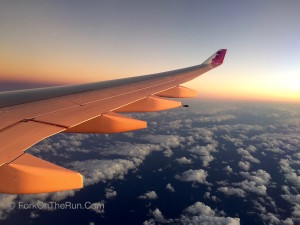Top Travel Apps and Strategies to Find the Best Fares
April 30, 2016 by Larry Shapiro
Searching for the best airfare deals can be frustrating, time consuming and aggravating—as well as leaving you feeling like you’re just not looking in the right places.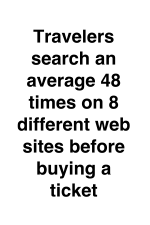
There are many airline marketing practices that contribute to this. In fact, few products or services, other than hotels and rental cars, have such opaque and constantly changing pricing as air travel.
Adding to the confusion is that air tickets are distributed and sold through many different sources.
In Part 1 we looked at the fundamentals of shopping for flights: the best days of the week to purchase tickets, how far in advance to shop and book, and what days to fly to get the lowest fares.
Now in Part 2 we’ll focus on the top travel apps that can boost your odds of getting a good deal and speed up the search process.
Apps Are Not Created Equal

If you find booking flights a hassle, you’re not alone. Expedia says travelers search an average 48 times on 8 different web sites before buying a ticket.
So it’s no surprise that there are an ever increasing number of apps promising to help you navigate the murky airfare world. But they are not all created equal.
Keep in mind when you are using different apps that every app and site has pluses, minuses and glitches. A few examples: Some search airline sites while others compile data from travel agent sites; many apps don’t include airlines such as Southwest or upstart European low cost carriers like Norwegian or WOW.
Plus some don’t display all available flight options, or they send you to a travel agent instead of an airline to book.
Top Travel Apps and Strategies to Find the Best Fares
To help simplify your search, here are some top picks for the best apps and sites that will help you save time and money.
1. Narrow your focus with Google Flights. Google has jumped into travel with Google Flights. Hands down, Google Flights is the best place to launch your search.
Just enter your city pairs and get an instant overview on what carriers serve the route, fares and flights. The default search is by the “best” itinerary, balancing price, fees,
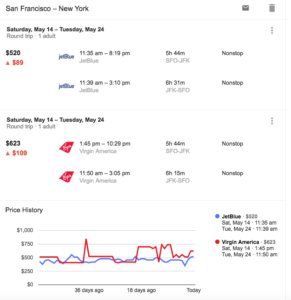
stops, layover time and overall travel duration.
If your travel dates are flexible (which is always best for finding good deals), there’s a fare calendar and graph to quickly compare prices by day and month.
A bit of skepticism is required since what looks like a great price might not be the best deal. It could be a red-eye, very early departure, require a long layover or be on an airline you hate.
With Google Flights, after selecting your flight segments, one click takes you directly to the airline site to book, which I prefer, instead of sending you to an online travel agent (OTA) like Orbitz. I like to deal with an airline directly and avoid OTAs, their fees and service issues. More about this in 2 below.
Google Flights offers many helpful sort options and lots of flight detail which aviation geeks like me love: type of plane, amount of legroom and average flight delays. The tool also highlights flight amenities including in-seat power and USB ports, Wifi, and video-on-demand.
Google recently enhanced the site by including Southwest flight information. Although fares aren’t shown, there’s a link to Southwest so you can quickly check prices.
After Google Flights, I sometimes check Hipmunk and Skyscanner to make sure I haven’t missed anything and to see if there are other options that might work.
2. Go to the airline site. After targeting good flight prospects, head over to the airline’s site to book. You’ll see the 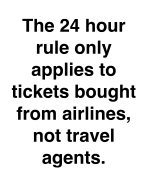 airline’s complete flight schedule (which is important since some OTAs don’t show every flight), and you can check out the seat maps to find what’s available and reserve directly.
airline’s complete flight schedule (which is important since some OTAs don’t show every flight), and you can check out the seat maps to find what’s available and reserve directly.
Equally important is the menu of extra services you can buy like premium economy seating and early boarding which you might not be able to purchase through an OTA.
Finally be sure to verify all extra fees to pin down the true price so you can compare deals– and avoid unhappy surprises.
3. Use fare alerts. Many apps offer fare alerts—but they mostly monitor just the route, or the route and date, but not the specific flights you want on your travel days.

A big plus with Google Flights is that it allows you to save and track unique flights if you have a Google account, which is a gmail address.
The site has a very helpful price change graph to quickly track price volatility. What’s really an eye opener is watching the huge and rapid fire airfare swings on your saved itineraries.
One glitch: you have to check the app for price fluctuations since the alerts are not sent to you (or at least I have not been able to receive any.)
Other good alert options are Hipmunk, which also has a price graph or Hopper. Both only track date and destination, not specific flights, but a plus is they do send frequent alerts.
Hopper deserves special mention for a fun and unusual feature: its price alerts include advice along with price predictions, such as “You should book now. Hopper hasn’t seen a price this low in 7 months”. Or “Your Las Vegas flight has gone up to $121 RT, but we predict prices will drop again. Keep waiting.”
While the advice may be as accurate as predicting the weather, if you’ve been tracking fares for a bit, you’ll recognize a good deal when you see it.
4. Take advantage of social media and sale alerts. Some air carriers announce deals using social media so connecting with them using Facebook and Twitter can reveal exclusive promotion codes. Don’t forget to sign up for an airline’s flash sale emails—a good deal to Hawaii can pop up at any moment.
5. Remember the special 24 hour refund rule. There’s a loophole that makes every non refundable ticket refundable thanks to the US Department of Transportation’s 24 hour rule.
Under federal law an airline must either hold your reservation for 24 hours or let you cancel for free within 24 hours of ticket purchase—without charging a fee.
If you find a better deal or change your mind within 24 hours, you can cancel and get a full refund or rebook without penalty.
Some catches: you must buy the ticket in the US and at least 7 days before the flight. This covers all airlines.
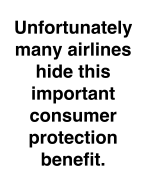 Caitlin Harvey, spokesperson for the Department of Transportation, says the 24 hour rule only applies to tickets bought from airlines, not travel agents. However, she told Fork on the Run the law will expand to cover large travel agencies with new rules scheduled to be finalized this summer.
Caitlin Harvey, spokesperson for the Department of Transportation, says the 24 hour rule only applies to tickets bought from airlines, not travel agents. However, she told Fork on the Run the law will expand to cover large travel agencies with new rules scheduled to be finalized this summer.
Some online travel agencies advertise a 24 hour refund policy, but it’s a good idea to check if they will impose any of their usual cancellation fees.
Unfortunately many airlines hide this important consumer protection benefit (hello Department of Transportation) and only mention it in fine print nobody reads.
They may also try to sell you (for a non refundable fee) a “fare lock” for a longer period, never pointing out the free 24 hour free option.
Fare locks can sometimes be worthwhile. I have successfully used them when prices seem to be escalating, and when I’m not quite ready to commit, so long as the fee seems reasonable, and I can also reserve my seats.
6. Watch out for price gouging on muli-city itineraries. Earlier this year the major legacy carriers, United, American and Delta quietly started hiking fares for trips with stopovers. Others may follow their lead. You may be able to save a lot by running a search for individual one way tickets. Another strategy is to book one way flights with an ultra low cost carrier or a customer-friendly carrier like Southwest with its “bags fly free” policy and none of the typical outrageous fees charged by legacy airlines.
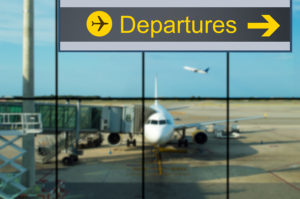 7. Sign up for refund alerts. Once you’ve booked, register your flights for free refund alerts from Yapta. Several US airlines offer a “guaranteed airfare policy” with vouchers or credits if fares drop.
7. Sign up for refund alerts. Once you’ve booked, register your flights for free refund alerts from Yapta. Several US airlines offer a “guaranteed airfare policy” with vouchers or credits if fares drop.
They require minimum decreases anywhere from zero on Alaska to $200 on United. A downside is that some charge a rebooking fee, ranging from no fee on Alaska up to $300 on United.
Yapta will let you know if the fare you paid drops by enough to make it worthwhile to pay the change fees. Yapta also lists the airlines with these policies.
Facts of Life About Buying Tickets
Airline marketing is both art and science—with one constant– fares are dynamic and change constantly. Every airline has sophisticated software and teams dedicated to revenue management—adjusting fares based on a host of factors including demand and competition.
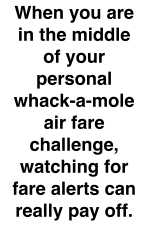 The frustrating part is that there are no 100% foolproof rules to follow. Flash sales and price cuts pop up—and disappear—in an instant. Or fares can take off without notice.
The frustrating part is that there are no 100% foolproof rules to follow. Flash sales and price cuts pop up—and disappear—in an instant. Or fares can take off without notice.
By using the tips in Part 1 of this story along with Google Flights and a few fare alerts, you can pretty quickly get a sense of prices. That way you’re ready to commit if a lower fare suddenly appears or you see a consistent rising price trend.
When you are in the middle of your personal whack-a-mole air fare challenge, watching for fare alerts and checking prices regularly—even a few times a day—can really pay off. It’s easy to do and nobody will notice you glancing at the phone on your lap during that boring Monday meeting.
c 2016-2023 Larry Shapiro/Fork on the Run
Leave a Comment*****
If you liked this story, please use the share buttons below to share it with your friends. Also be sure to subscribe – it’s free. Lastly, please feel free to contact us anytime with comments, suggestions or feedback using the contact form. Your thoughts are really important to us and we respond to every note.
Share This:


